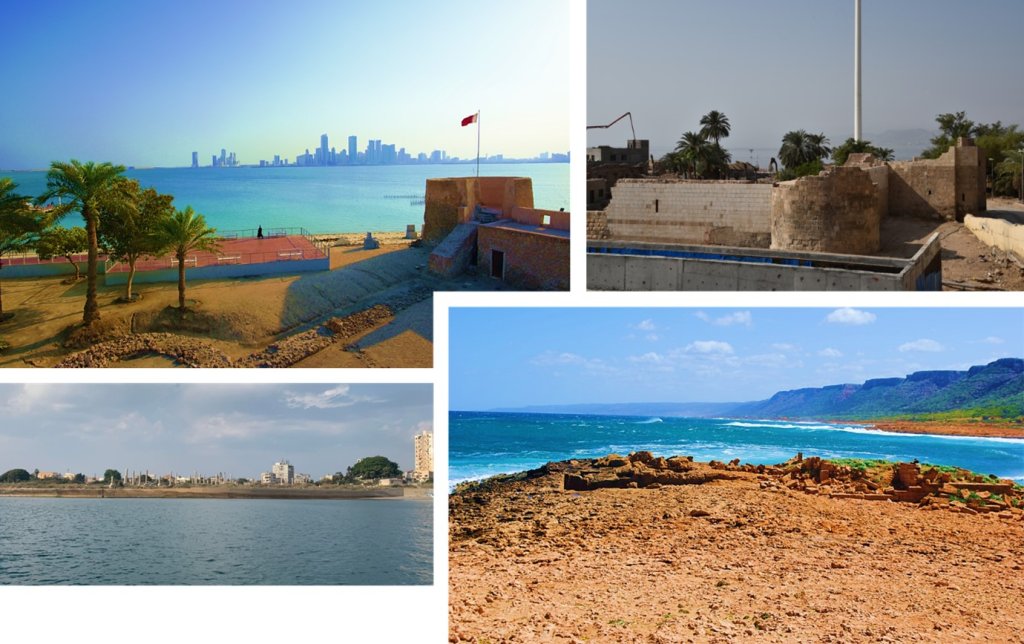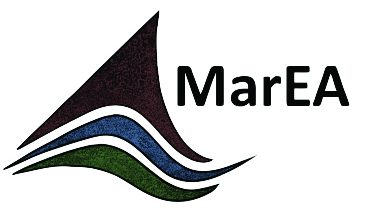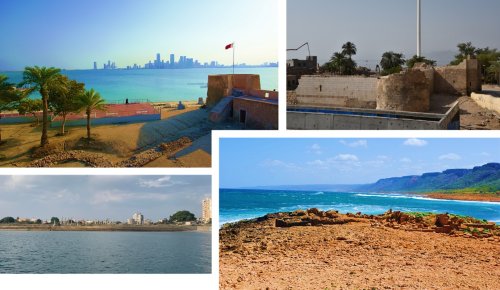by MarEA team
The coastal zones of the MENA region are subject to high paced development and changes with both anthropogenic and natural causes. The Maritime Endangered Archaeology (MarEA) Project rapidly and comprehensively documents and assess threats and damages to the maritime and coastal heritage of the Middle East and North Africa using satellite imagery, published data and archival information. The data is added to the open access database platform of the Endangered Archaeology in the Middle East and North Africa (EAMENA) project hosted by the University of Oxford. One of the emerging outcomes of our documentation and evaluation work is the recognition that improved approaches towards the management of maritime cultural heritage (MCH) are needed to mitigate the increasing natural and anthropogenic threats (Breen et al 2021).

The documentation of cultural heritage sites and landscapes into the Arches open access database allows for an analysis of sites that fall within, or are close to, the boundaries of existing Marine Protected Areas (MPAs) and other protected natural areas. Over 550 archaeological sites within MPAs in the MENA region have been documented to date. The MarEA project proposes a model that would allow for more inclusive and meaningful integration of MCH to existing nature protected areas such as Marine Protected Areas (MPAs), marine reserves, protected nature areas or protected wetlands.

Marine Protected Area frameworks emerged in the past decade as effective management for the protection and conservation of global oceanic ecosystems. Various studies and evaluations of these frameworks have shown their effectiveness, which supports a healthier marine ecosystem, and can be very beneficial to local communities. In fact, the involvement of the local community, their (traditional) knowledge of the area and their validation is key to a successful MPA (e.g. Holly et al 2022; Dehens and Fanning 2018; Sowman et al 2014). There are significant global variations in approaches to the protection and management of MCH. In the MENA region, cultural heritage is often mentioned during the appraisal and designation phase, but rarely features prominently in the management plans and activity programs associated with these areas. Even though legislatively protected marine heritage sites do exist, they tend to be site-specific, as opposed to a more landscape focused approach (Breen et al 2021).
The integration of cultural heritage management into protected natural areas offers many opportunities regarding documentation, monitoring, community involvement, and socio-economic benefits. In this proposed benchmark of Marine Cultural Heritage Protected Areas (MCHPA), natural and cultural values are intrinsically connected and enjoy a balanced and equitable approach. It should serve as a pragmatic framework with the possibility of a tailored approach in each area, but also function as part of a larger network, in which experience and expertise is shared. This toolkit should support capacity development, enhanced social cohesion, a strengthening of place-making, and sustainable protection of vulnerable marine environment, including heritage sites.


If you have experience in managing or working in either a protected natural area or cultural heritage site and are interested in this project, we would appreciate if you would take some time to fill in our short questionnaire on the subject. This is available online at https://form.jotform.com/MarEA_01/MPA_CH. Or email j.nikolaus@ulster.ac.uk for more information.
Bibliography
Breen, C., C. El Safadi, H. Huigens, S. Tews, K. Westley, G. Andreou, R. Ortiz Vazquez, J. Nikolaus and L. Blue (2021). Integrating cultural and natural heritage approaches to Marine Protected Areas in the MENA region. Marine Policy 132. https://doi.org/10.1016/j.marpol.2021.104676
Holly, G., A. Rey da Silva, J. Henderson, C. Bita, W. Forsythe, Z.A. Ombe, C. Poonian and H. Roberts (2022). Utilizing Marine Cultural Heritage for the Preservation of Coastal Systems in East Africa. Journal of Marine Science and Engineering 10 https://doi.org/10.3390/jmse10050693
Dehens, L.A. and L.M. Fanning (2018). What counts in making marine protected areas (MPAs) count? The role of legitimacy in MPA success in Canada. Ecological Indicators 86 https://doi.org/10.1016/j.ecolind.2017.12.026
Sowman, M., S. Raemaekers, J. Sunde and M. Hauck (2014). Policy Briend. Integrating Human Dimensions into MPA Planning and Management. Environmental Evaluation Unit, Department of Environmental and Geographical Science, University of Cape Town, South Africa.


